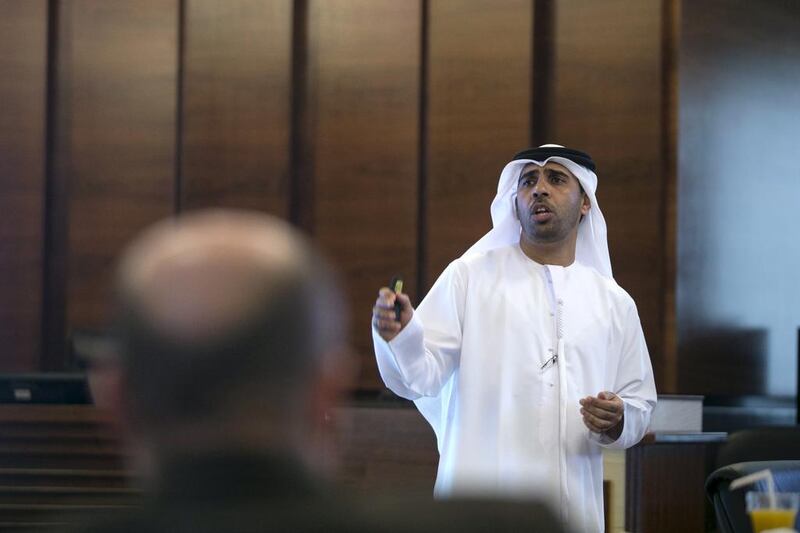ABU DHABI // The number of young people appearing in court on criminal charges has fallen dramatically since the introduction of a reconciliation process.
Juvenile court cases almost halved to 492 last year from 991 in 2013. The main reason was reconciliation, to which the Abu Dhabi Judicial Department turned for more petty cases, said Mohammed Al Dhanhani, head of family prosecution.
Mediation for offences such as vandalism freed up the courts for more serious cases and protected the reputation of young people and their families
“When a simple case such as vandalising a door, which in some cases is purely accidental, comes to us we choose to keep it instead of taking it into court,” he said.
“This way we are more able to contain the issue instead of referring it to court, while maintaining the juvenile’s and his family’s reputation.
“When a child or an adolescent commits a crime it is because there is a societal disturbance and there are circumstances that lead him to do it.
“If the case is referred to court his name will go under a criminal record, and he will be subject to a legal verdict. Our role is to try to keep the cases from being referred to court.”
Of the 492 cases last year, 86 per cent were for misdemeanours and 1,017 young people aged between 12 and 18 were found guilty.
Thirty-nine per cent were related to traffic offences, 21 per cent to theft and 18.5 per cent involved physical assault.
Mr Al Dhanhani said dangerous cases, such as drug abuse or “crimes of honour”, should be referred to court.
“I recognise here that he needs reform and rehabilitation. The judge in this case will know where the adolescent needs to go for that,” he said.
The department’s education programme in schools was also a factor in fewer juvenile trials.
“Our awareness focuses on the harmful results, like the legal responsibility,” he said. “The juvenile might understand that the action he is committing is wrong and unacceptable, and he is fine with it. When he knows of the results he will think again.
“Sometimes they think if the police get to them then that is the end, there will be no prosecution, because they don’t know what the prosecution process is.”
“When we inform them what the consequences could be, they are more afraid of committing the crime,” Mr Al Dhanhani said. “We have, in this way, prevented them from committing other harmful acts.”
Hadeya Hammad, a lawyer who deals with juvenile cases, said there were many factors leading to adolescent crime, including emotional or mental illnesses.
“Whenever there are circumstances such as disease or neglect, it could lead to criminal behaviour,” Ms Hammad said.
“When puberty hits, a biological and physiological phase takes place in the body causing a great mental and emotional gap, which then creates emotional instability and weak willpower.”
External factors also have a role in forming an adolescent’s personality, which could lead to criminal behaviour.
“Any environmental issue like family disintegration or a death in the family, or not having a proper role model, or not having enough religious knowledge sometimes creates a feeling of hate or constant pressure on the adolescent,” Ms Hammad said.
aalkhoori@thenational.ae






